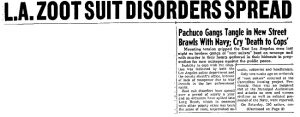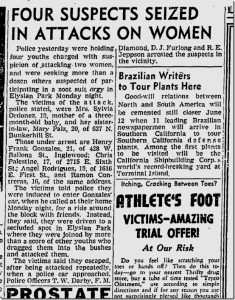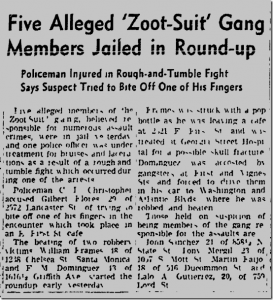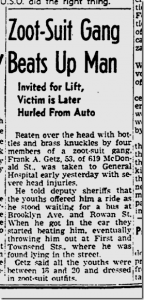As in many historical race tensions, the press was a large dividing factor. “The truth” becomes a mystic concept that alters daily depending on where you’re receiving information from and where.
The two main news sources of this time were the”La Opinion” (a newspaper in Spanish) and “Los Angeles Time” (a newspaper in English).
An example of what I originally meant by “the truth” as it’s ever-shifting meanings comes when looking at “La Opinion”. “La Opinion” started at first running articles sympathetic to the white servicemen and blamed the Mexican-American’s for the riots. However, over time “La Opinion” shifted its tone toward the pachucos and soon ran articles about the race tensions. It discussed reasons causing the tensions and solutions to the riots. They did have to make sure there wasn’t anything too controversial printed. “Writers for La Opinion did not want white Americans to question the loyalty of the Hispanic community. If La Opinion, the most popular Spanish-language newspaper, was writing negative stories on white servicemen, the Hispanic community’s loyalty to the war effort could be in question” (Mayela Leyva Caro).
The quote above is a great example of the lack of any nationwide, authentic portrayals of the Mexican-American narrative. The other main new source of the time and city, the Los Angeles Times, was incredibly biased and ran multiple articles that had inaccurate information that was phony…or fake. This paper caused many people to generate entirely unfair and unfounded opinions on Mexican-American’s.
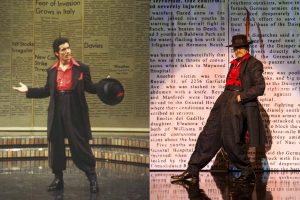
Edward James Olmos, left, in “Zoot Suit” in 1978, and Demian Bichir, right, in the new revival, both at Center Theatre Group. (Photos by Jay Thompson, Craig Schwartz)

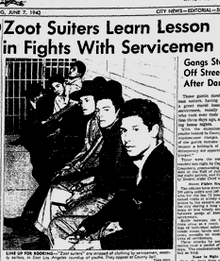
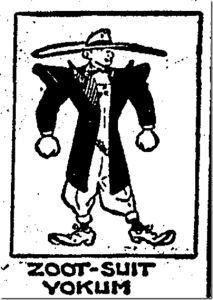
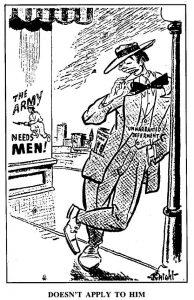

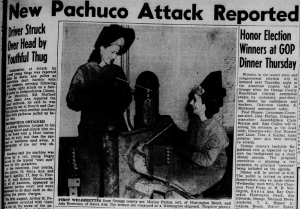
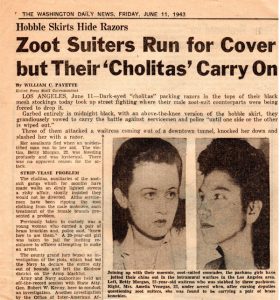
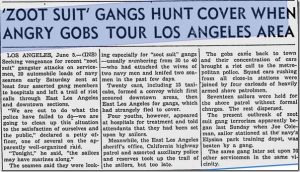 ]
]


